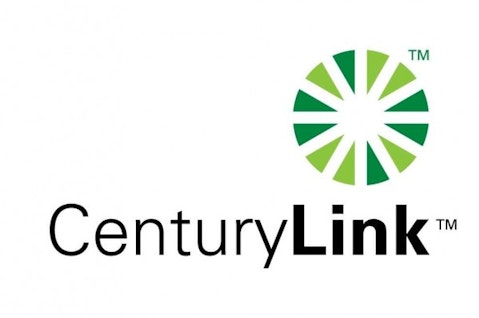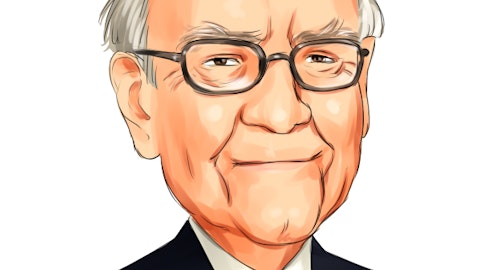This is the third in a series reviewing the favorite short candidates of the AdvisorShares Ranger Equity Bear ETF (NYSEMKT: HDGE), co-managed by John Del Vecchio and Brad Lamensdorf. The managers have a background in forensic accounting and analyze factors such as earnings quality and relative strength to determine which shares to short.
The fund is down 33 percent from its 52-week high as the market gains ground. But with the Dow near an all-time high, contrarian investors may be looking for ways to hedge portfolios against a market correction. The first two parts of this series covered the fund’s top six short positions at the end of January. They are available here and here.
Since then, perhaps in anticipation of Chipotle’s earnings report Tuesday, the fund reduced its short position in the restaurant chain from 5 to 3 percent. As a result, Chipotle fell from the fund’s second-largest position to its seventh. This post will cover the three largest positions not previously covered.

CenturyLink, Inc. (NYSE:CTL) was a 3.3 percent short position as of Feb. 4, making it the fund’s sixth-largest. You might need to be a forensic accountant to make sense of its balance sheet after the rollups of Embarq, Qwest and Savvis over the past several years, consolidating its local exchange business and venturing into internet service and cloud computing.
It is now the third-largest telecom company in the U.S., but its legacy residential wireline business is declining rapidly as wirelessly-connected households abandon the landline. Total revenues declined by $25 million in the third quarter of 2012 compared to the year-earlier period.
Considering some $21 billion in transactional goodwill, nearly $20 billion of debt and a 7 percent dividend, it’s easy to imagine a scenario in which economic headwinds and a declining legacy business produce a financial crunch. Jeremy Phillips of The Motley Fool highlighted some of the financial metrics to watch out for more than two years ago.
Century Link wants to leverage the high-capacity fiber network it acquired with Qwest to become an essential part of internet infrastructure, enabling enterprise clients to run high-bandwidth applications through its fat pipes. It hopes that its enterprise business, including cloud computing, takes up the slack for the declining residential landline business.
The key to Century Link’s stock price is maintaining the hefty $2.90 per share dividend. The share price has been locked in a range between $25 and $50 for more than 10 years, so buyers probably aren’t betting on capital appreciation. In a race between the decline of its legacy business and the growth of its internet business, HDGE is betting on the decline. Short interest in Century Link represented 5.6 percent of the float in January.
“Century Link is a new position for us,” Lamensdorf told CNBC earlier this year. “This is the old Qwest-Savvis rollup, land lines and internet service. The way that we found this company is we were screening cash flow, and the dividend on this company takes 90 percent of their entire cash flow. We started doing a lot more work on it and we found a lot of poor cash flow items involved with the cash flow number that they’re feeding to us. We think that cash flow number is pretty questionable.”
Even with interest rates near zero, Lamensdorf said Century Link is unable to use traditional debt instruments to raise funds to pay the dividend because it is so highly leveraged already.
“They actually needed to do some CapEx just recently and they couldn’t even come up with a debt-type offering because they’re so stretched,” he said. “They did a capital lease. That’s again pulling more liabilities going out. They played with some depreciation where Qwest had some depreciation that was, say, six or seven years left. They took it out to 10 or 15. They’re playing a lot of games, and we really feel like this is the type of name where, if there is weakness in the economy, this thing really gets whacked — 25, 40 percent.”
Coach, Inc. (NYSE:COH)
Coach, Inc. (NYSE: COH) was a 2.8 percent short position as of Feb. 4, making it the fund’s eighth largest. It was one of the few positions to help HDGE’s share price recently as the market generally roared to the upside during the first month of 2013.
Coach shares were battered after the company missed earnings estimates for the first time in seven years and saw same-store sales in North America decline year over year for the first time in 11 years.
The holiday season highlighted complaints of stale merchandise and competitors in the high-end retail space encroaching on Coach’s traditional territory. Several analysts pointed to the challenge posed by high-end competitor Michael Kors Holdings Ltd (NYSE: KORS).
Coach’s “share losses in the U.S. are accelerating, which we expect to continue while large competitors continue the rapid square footage” expansion, Michael Binetti, a UBS retail analyst, wrote.
Coach trades at the multiples of a mature, slow-growth company, fetching about 14 times trailing earnings and 12 times forward earnings estimates. The comparable multiples for Michael Kors are 44 and 27. Short interest in Coach represented 5.2 percent of the float in January.
Coach now bases its growth story on international sales, particularly in China. But with inventories growing faster than sales in the holiday quarter, some analysts fear markdowns, and the resulting reduced margins, going forward.
“These luxury retailers, we feel like the whole space is over-owned,” Lamensdorf told Canada’s Business News Network in October. “A lot of the stocks are showing distribution. However, if you look deeper, their inventory levels have been rising faster than their growth rates. Inventories for Coach rose almost 15 days during the last quarter.”
PAREXEL International Corporation (NASDAQ:PRXL)
PAREXEL International Corporation (NASDAQ: PRXL) was a 2.7 position on Feb. 4, the fund’s ninth-largest. Shares of the Waltham, Mass.-based bio-pharmaceutical services company, one of the largest contract research organizations in the world, are up nearly 40 percent over the past year. Investors greeted the company’s fiscal second-quarter results warily last week, dropping the stock by 3 percent. It recovered quickly, regaining its previous level by the end of the week.
Analysts worry that profit margins will be compressed by the need to increase employee headcount as the company moves to a strategy of signing major partnership agreements with large clients, including Pfizer Inc. (NYSE:PFE). PAREXEL is now one of two primary CRO providers for the pharma giant. The company added 2,000 employees in fiscal 2012.
“The updated guidance for the second half of fiscal 2013 implies a smaller margin improvement than we had expected, and initial guidance for calendar 2013 implies a larger revenue growth deceleration,” John Kreger, an analyst for William Blair, wrote in a research report.
Prior to the earnings report, Stern Agee reiterated an underperform rating on the stock.
“We believe investors are underpricing the risk inherent in Parexel,” the firm’s analyst wrote. “A much higher customer concentration and insufficient operational benefits accruing to clients from strategic partnerships (based on our industry checks) make PAREXEL a riskier investment than either CVD (Covance Inc.) or CRL (Charles River Laboratories International), in our opinion. Therefore, we use 15x CY14 to arrive at a $27 price target for PRXL; compared to a 10-year average of 18x.”
Morningstar’s Lauren Migliore was more sanguine.
“CROs have a really hard time matching capacity exactly with the demand,” she said. “That’s why you see a good amount of operating leverage either way. But for the most part, we do expect operating margins to expand as these strategic partnerships ramp up.”
Short interest in PAREXEL was 6.9 percent of the float on Jan. 15, according to Yahoo! Finance.
The article Short Candidates for Contrarians, Part 3 originally appeared on Fool.com and is written by D J Krieger.




